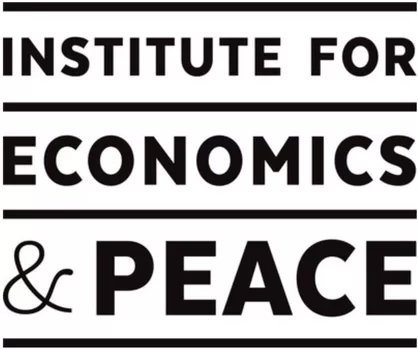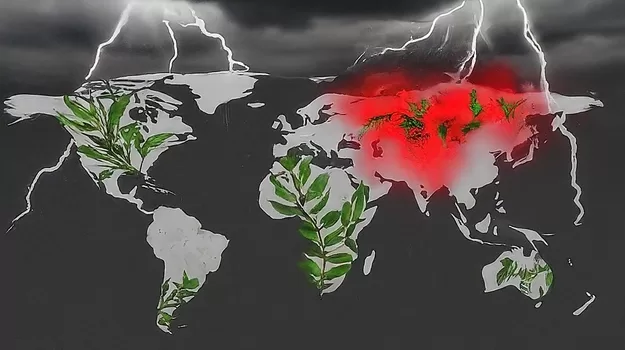The 18th edition of the Global Peace Index (GPI) from the Institute for Economics & Peace (IEP) reveals that the world is at a pivotal moment, with a looming risk of increased major conflicts if significant efforts are not made.
According to the report, 97 countries saw a decline in peacefulness in the past year, the highest number since the GPI began in 2008. The conflicts in Gaza and Ukraine were key factors in the global decrease in peacefulness, with battle deaths reaching 162,000 in 2023.
The report highlights that 92 countries are currently involved in conflicts beyond their borders, the highest number since the GPI’s inception, and the highest number of countries engaged in conflict since World War II.
The global economic impact of violence has surged to $19.1 trillion in 2023, accounting for 13.5% of global GDP. This situation poses a significant risk to global supply chains, affecting both governments and businesses.
Militarization has recorded its most considerable yearly deterioration since the GPI’s start, with 108 countries becoming more militarized.
The report also notes that 110 million people are either refugees or internally displaced due to violent conflict, with 16 countries now hosting more than half a million refugees.
North America experienced the largest regional decline, driven by increases in violent crime and fear of violence.
Currently, there are 56 conflicts, the most since World War II, and the number of minor conflicts suggests a higher likelihood of future major conflicts. For instance, in 2019, Ethiopia, Ukraine, and Gaza were identified as minor conflicts.
Last year saw 162,000 conflict-related deaths, the second-highest toll in the past 30 years. The conflicts in Ukraine and Gaza accounted for nearly three-quarters of these deaths.
Ukraine alone recorded 83,000 conflict deaths, while Palestine had at least 33,000 up to April 2024. In the first four months of 2024, there were 47,000 conflict-related deaths globally. If this rate continues, it would result in the highest number of conflict deaths since the Rwandan genocide in 1994.
The economic cost of violence in 2023 was $19.1 trillion, or $2,380 per person, reflecting a $158 billion increase driven by a 20% rise in GDP losses from conflict. Peacebuilding and peacekeeping expenditures totalled $49.6 billion, which is less than 0.6% of total military spending.
Iceland remains the most peaceful country, a title it has held since 2008, followed by Ireland, Austria, New Zealand, and Singapore, which is a new entrant in the top five. Yemen has replaced Afghanistan as the least peaceful country, followed by Sudan, South Sudan, Afghanistan, and Ukraine.
The Middle East and North Africa (MENA) region remains the least peaceful, with Sudan and Yemen being the two least peaceful countries. Despite this, the UAE saw the largest improvement in peacefulness in the region, rising 31 places to 53rd in 2024.
Steve Killelea, Founder & Executive Chairman of IEP, stated, “Over the past decade, peacefulness has declined in nine out of the ten years. We are witnessing a record number of conflicts, a rise in militarisation, and heightened international strategic competition.”
He emphasized the impact of conflict on the global economy and the increased business risk from conflict, urging world leaders to invest in resolving minor conflicts before they escalate into larger crises.
Conflicts are becoming more widespread and internationalized, reducing the likelihood of achieving lasting solutions. Ukraine and Gaza exemplify ongoing ‘forever wars’ without clear resolutions.
The proportion of conflicts ending in decisive victories has fallen significantly from 49% in the 1970s to less than 9% in the 2010s, while those ending through peace agreements have dropped from 23% to just over 4%.
Asymmetric warfare technology, such as drones, has also reshaped conflicts, enabling non-state groups and smaller states to challenge larger states more effectively.
Israel – Gaza – Middle East
The report indicates that Israel’s ranking fell to an all-time low of 155th due to the Gaza war, marking the largest deterioration in the 2024 GPI. Palestine has also seen the largest deterioration over the past decade, dropping to 145th.
The conflict has exacerbated regional tensions, involving Syria, Iran, Lebanon, and Yemen, with severe economic consequences and a high risk of open warfare.
For instance, Syria’s economy shrunk by over 85% after the civil war began in 2011, and Ukraine’s economy shrunk by 29% following the onset of conflict in 2022.
Russia – Ukraine War
Since the Ukraine war began, militarisation has increased in 91 countries, reversing the previous trend of reduced military spending. Over the last decade, global military capability has increased by over 10%, even as troop numbers have decreased.
The IEP’s new research highlights that the U.S. has substantially higher military capability than China, closely followed by Russia. U.S. military capabilities are up to three times higher than those of China.
Regional unrest
Regional highlights from the report include Europe remaining the most peaceful region, despite a significant increase in military expenditure. North America saw the largest regional deterioration in peacefulness, driven by rising violent crime and fear of violence.
Sub-Saharan Africa is now the second least peaceful region, facing security crises such as political unrest and terrorism in the Central Sahel.
Asia-Pacific remains the second most peaceful region, though Papua New Guinea experienced significant deterioration due to intensified tribal violence.
Central America and the Caribbean saw minor declines in peacefulness, while South America experienced the second largest fall, primarily due to increases in the Homicide Rate, Political Terror Scale, and Intensity of Internal Conflict indicators.
Global Peace Index (GPI)
The Global Peace Index (GPI), produced by the international think-tank Institute for Economics & Peace (IEP), offers the most comprehensive data-driven analysis of peace to date.
This report explores peace’s economic value, trends, and strategies for developing peaceful societies. Covering 99.7% of the world’s population, the GPI uses 23 qualitative and quantitative indicators from highly respected sources, grouped into three key domains: Ongoing Conflict, Safety and Security, and Militarisation.
The Institute for Economics & Peace (IEP) is an international and independent think tank dedicated to promoting peace as a positive, achievable, and tangible measure of human well-being and progress. With offices in Sydney, Brussels, New York, The Hague, Mexico City, and Nairobi, IEP works globally to shift the focus towards peace.



Related stories
Reactions to Dutton’s large nuclear reactor policy
Women in Media Industry Insight Report 2024
Victoria’s Offshore Gas Drilling Approval Condemned
NT Govt Signs Deal for Unapproved Fracking Project
UN Secretary-General Calls for Fossil Fuel Advertising Ban
Global Methane Pledge: UN launch methane detection satellite
Net Zero+ International Programme for Action on Climate
Climate of the Nation Report: Australia Climate Research
Carbon Credits Used to Plug Orphan Oil & Gas Wells
Best way to reduce climate change is stop gas industry methane leaks
What is Greenwashing and How to spot it
Meet the Frackers: Gas explorers in Australia



